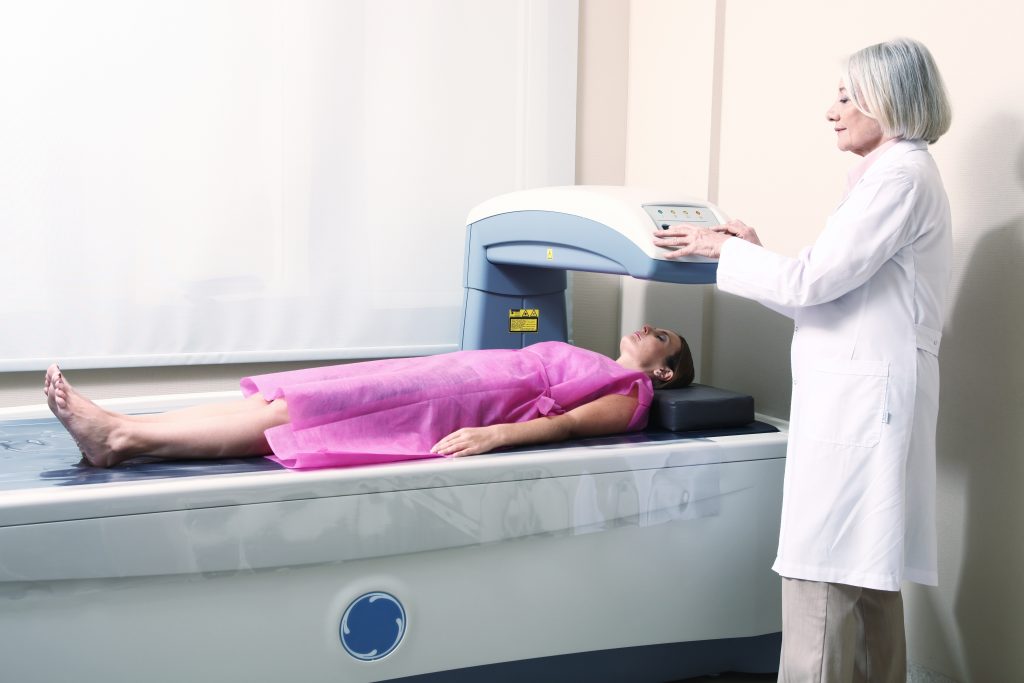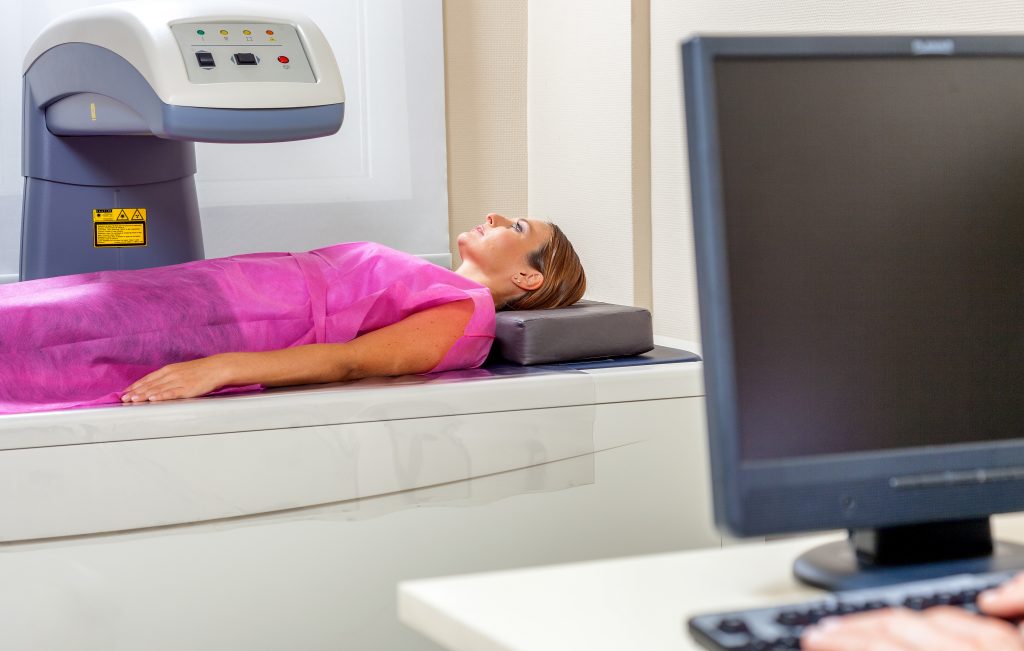What is a DEXA scan?
A DEXA scan is a low-dose radiation x-ray that is used to measure a person’s bone density. The DEXA scan produces pictures of the patient’s bones. Usually, the patient’s hips or lower spine are scanned. Providers order DEXA scans for patients to assess risk or diagnosis of osteoporosis (bone loss). Providers also use DEXA scans to see if treatment for bone loss is working.
Why get a DEXA scan?
Most patients get a DEXA scan at their provider’s recommendation. Generally, women who are over 65, men who are over 70, anyone who has broken a bone after age 50, and people who have certain risk factors for bone loss benefit the most from a DEXA scan. Patients who have lost ½ inch of height in a year or 1 ½ inches of height may also be recommended for a DEXA scan. Getting a DEXA scan can help your provider determine the best treatment plan for you if you are experiencing bone loss. DEXA scans can also help assess your risk of breaking a bone.
What are the risks?
Providers consider DEXA scans to be safe screening tests for most patients. The amount of radiation emitted during the scan is a very low dose and is unlikely to cause ill effects. However, DEXA scans are not recommended for pregnant women because the x-rays can hurt the embryo or fetus.
What are the benefits?
DEXA scans are a quick and painless way to assess your bone loss, risk of breaking a bone, and if bone loss treatment is working. Knowing this information helps your provider get you the best treatment plan possible.
What can I expect during my scan?
When you go in for your scan, you will be asked to remove any clothing or accessories with metal and you may be asked to change into a hospital gown. You will lay down on the x-ray table for the scan. During the scan, you will lie very still while the imaging “arm” of the machine scans your bones. The scan causes no pain and takes only a few minutes to complete.
What can I expect after my scan?
Once the scan is complete, a radiologist will interpret your scan images and determine your bone density. Your provider will go over the results with you and talk with you about a treatment plan to protect your bones.